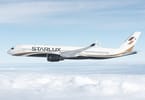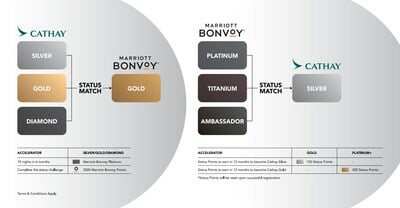Your choices for the evening are “grilled sirloin steak with a classic béarnaise sauce or grilled chicken breast with a mandarin orange sauce,” followed by what is seductively described as an “indulgence in signature desserts.” No, this is not a quote from a five-star restaurant menu. These are meals currently offered by United Airlines as part of its first class dining service. We are talking airline food here.
Airlines around the world have noticed that passengers still value good in-flight service and are willing to pay for it. The industry’s responses are not limited to first- and business class. And, although the era of included meals seems to be gone forever in economy (coach), those who travel in the back of the plane can still pick and choose from a selection of snacks and even fresh foods, like salads and sandwiches – if they are willing to shoulder the extra costs. And many coach travelers are.
There is not only a growing demand for better tasting meals, but also for lighter and healthier food options. More airlines are making a point of including healthy fares in their menus, like fresh salads or vegetarian sandwiches. They take their cues from popular upscale food outlets you can find in most major airports. Wolfgang Puck Gourmet Express shops and California Pizza Kitchen come to mind. Many frequent flyer programs include access to exclusive waiting areas within terminals, like the Red Carpet lounges, where high quality refreshments are served at no extra charge.
For years, airlines have been trying to reduce costs for in-flight meals through cut backs and eliminations. Now they intend to turn the formally inclusive services into a profitable side of their business. They know that they miss out when passengers either eat their meals on the ground or bring food on board. While the traditional concept of free meals being included in today’s air travel experience may no longer be sustainable, it does not mean that travelers should have to go hungry. On the contrary, airplane cabins, no matter which class, can be operated like restaurants. According to marketing experts, airlines could add up to $35 million to their bottom line by offering quality in-flight meals for sale.
One important step in this direction has already been taken by requiring all passengers to pay by credit card only. This not only simplifies the work of flight attendants by not forcing them to carry cash around, but, more importantly, allows the airlines to monitor food and beverage inventories and streamline their supply chains.
What is less clear at this point, however, is how cabin crews will handle the additional work load in the new “flying restaurants.” Just imagine what is asked of the flight attendants who must work in tightly confined spaces to prepare and serve potentially hundreds of made-to-order meals. And how about passengers trying to sleep or watch a movie in the midst of all the ongoing commotion?
Airline executives are the first to admit that most of the new programs are still in a stage of experimentation. It is not at all clear how their customers will respond to these new ideas. Traditional airline food has a notoriously bad reputation, and not only at the lower end of the spectrum. Whether air travel will be able to regain some of its former clout remains to be seen.
In principle, of course, I applaud the industry’s attempt to improve the nutritional quality of the food it offers to the public, whether it is included in the ticket price or charged for in addition. Consumers should consider these changes and take advantage of them. Only sufficient demand will give the airlines the incentive to continue this trend.
On the other hand, we should not expect to see a new age of higher health-consciousness up in the skies. Even the best (and most expensive) meals and snacks you can purchase on the plane contain many processed ingredients, which are typically high in sugar, salt and fat. And, so far, research is showing that the less healthy options, like pastries, pretzels and nuts, are still the most popular – up and down the aisles. Travelers, too, have a long way to go.
WHAT TO TAKE AWAY FROM THIS ARTICLE:
- In principle, of course, I applaud the industry’s attempt to improve the nutritional quality of the food it offers to the public, whether it is included in the ticket price or charged for in addition.
- And, although the era of included meals seems to be gone forever in economy (coach), those who travel in the back of the plane can still pick and choose from a selection of snacks and even fresh foods, like salads and sandwiches – if they are willing to shoulder the extra costs.
- Airline executives are the first to admit that most of the new programs are still in a stage of experimentation.






















